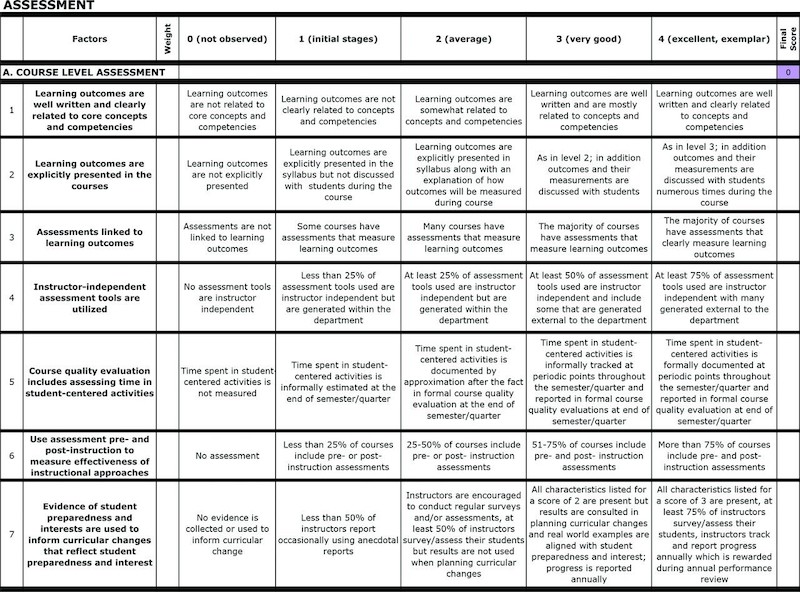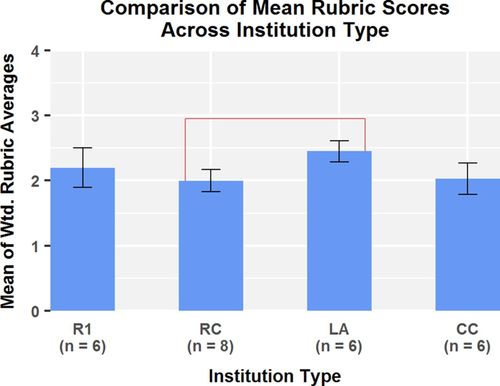Developed by Partnership for Undergraduate Life Sciences Education (PULSE)
| Purpose | To evaluate department-wide integration of best practices in modern teaching by considering various features of undergraduate programs. |
|---|---|
| Format | Rubric |
| Duration | N/A min |
| Focus | Teaching (Curriculum, student learning assessment, student retention, Critical thinking, extracurricular activities, faculty development, pedagogy, physical infrastructure, resources, administrative support, di) |
| Level | Upper-level, Intermediate, Intro college |
Example rubric items from PULSE Rubrics:

more details
This is the second highest level of research validation, corresponding to at least 5 of the validation categories below.
Research Validation Summary
Based on Research Into:
- Relevant theory and/or data
Studied Using:
- Iterative use of rubric
- Inter-rater reliability
- Expert review
Research Conducted:
- At multiple institutions
- By multiple research groups
- Peer-reviewed publication
The PULSE rubrics are extensively research validated. They were developed based on accreditation models and guidelines for STEM departments, and revised through extensive user feedback. Eight departments pilot-tested the rubrics, and a site visit team generally agreed with their self-assessments. An additional 26 institutions submitted rubric data sets which were analyzed for reliability and an exploratory factor analysis was conducted. Most aspects of the rubric met desired levels of reliability, and the factor analysis resulted in a restructure of the rubric.
References
- K. Aguirre, T. Balser, T. Jack, K. Marley, K. Miller, M. Osgood, P. Pape-Lindstrom, and S. Romano, PULSE Vision & Change Rubrics, CBE Life. Sci. Educ. 12 (4), (2017).
- L. Brancaccio-Taras, J. Awong-Taylor, M. Linden, K. Marley, C. Reiness, and A. Uzman, The PULSE Diversity Equity and Inclusion (DEI) Rubric: A Tool To Help Assess Departmental DEI Efforts, J. Microbiol 23 (3), (2022).
- L. Brancaccio-Taras, P. Pape-Lindstrom, M. Peteroy-Kelly, K. Aguirre, J. Awong-Taylor, T. Balser, M. Cahill, R. Frey, T. Jack, M. Kelrick, K. Marley, K. Miller, M. Osgood, S. Romano, A. Uzman, and J. Zhao, The PULSE Vision & Change Rubrics, Version 1.0: A Valid and Equitable Tool to Measure Transformation of Life Sciences Departments at All Institution Types, CBE Life. Sci. Educ. 15 (4), 15 (2016).
We don't have any translations of this assessment yet.
If you know of a translation that we don't have yet, or if you would like to translate this assessment, please contact us!
| Typical Results |
|---|
Typical rubric results from a variety of institution types, from Brancaccio-Taras et al. 2017:
(doctorate-granting universities = R1, comprehensive universities and colleges = RC, liberal arts colleges = LA, and 2-year colleges = CC) |




